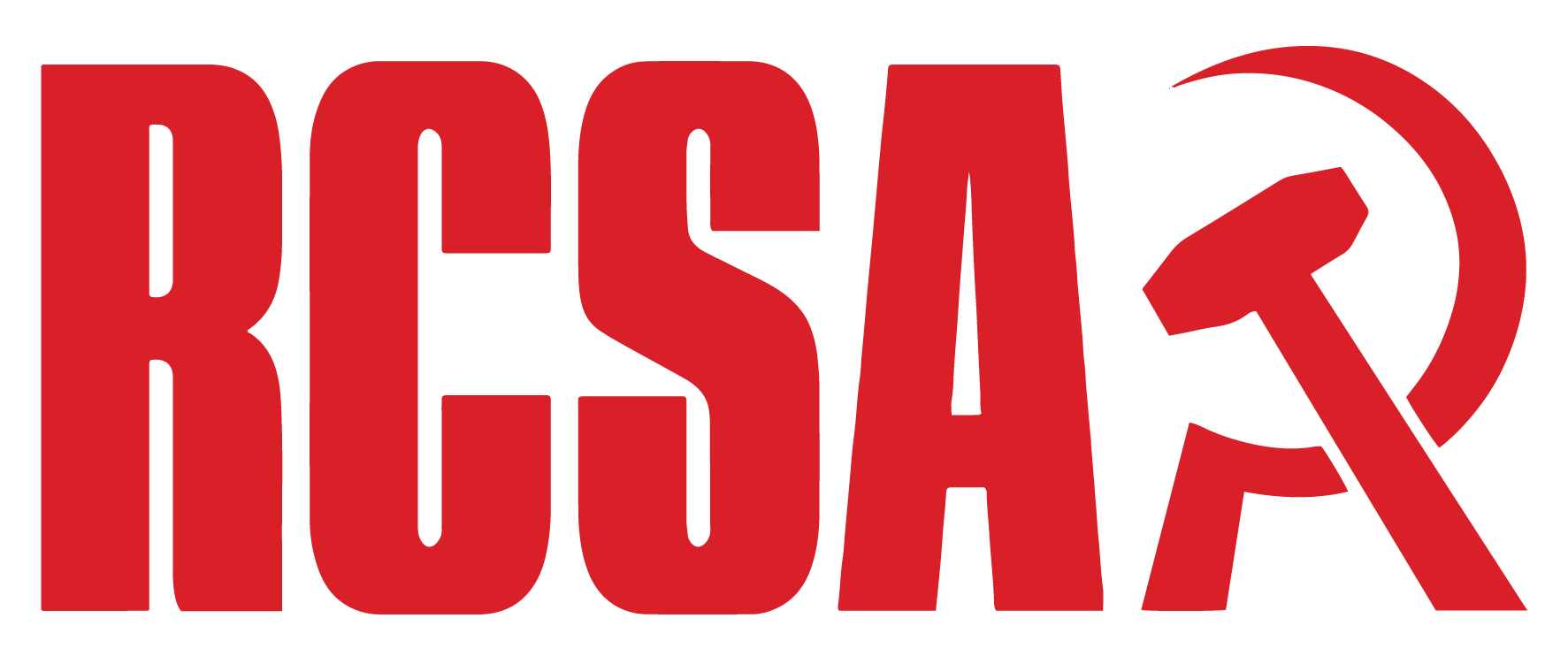[Published on marxist.com: Adam Booth, 31 October 2025]
The history of science is that of humanity’s quest to understand the workings of the universe, free from mysticism and supernatural forces. In this article, Adam Booth explores the revolutionary process by which scientific ideas advance, the link between developments in science and wider society, and the crisis of science under capitalism today.
[This article was originally published as part of issue 48 of In Defence of Marxism magazine – the quarterly theoretical magazine of the Revolutionary Communist International. Subscribe and get your copy here]
A plethora of symptoms have prompted this mood of pessimism. Most glaring is the lack of ‘disruptive’ research that pushes the frontiers of human knowledge.
Based on a meta-analysis of millions of papers and patents published over a six-decade period, a study in prominent science journal Nature from January 2023 reported that research is “becoming less disruptive over time”.[2]
The authors found strong evidence that “progress is slowing in several major fields”, and that “papers and patents are increasingly less likely to break with the past in ways that push science and technology in new directions”.[3]
Instead, they suggest that modern researchers have a tendency to rely “on a narrower set of existing knowledge”, favouring investigations that make incremental advances, rather than exploring potentially groundbreaking territory.[4] In summary, science has become plodding, not pioneering.
“Overall”, the Nature article concludes, “our results suggest that slowing rates of disruption may reflect a fundamental shift in the nature of science and technology.”[5]
Another paper from April 2020 asks the question, “are ideas getting harder to find?” The short answer is: yes. “Research effort is rising substantially while research productivity is declining sharply”, the economists state.[6]
At the same time, there are longstanding worries about a ‘replication crisis’ throughout science: an inability to confirm the validity of published results, leading to a general mistrust towards the quality of officially-sanctioned research.
One survey of over 1,500 researchers from 2016 found that more than 70 percent “have tried and failed to reproduce another scientist’s experiments”.[7] Earlier studies looking at cancer-related research and drug development found that just 11 percent and 25 percent of landmark findings in these fields, respectively, could be reproduced.[8]
Worse still, it was reported that over 10,000 scientific papers had to be retracted by academic journals in 2023, due to suspicions that these were in some way fabricated.[9] And there are fears that these discovered fakes are only the “tip of the iceberg”[10] when it comes to bogus research, with anxieties that AI is only making matters worse, allowing sham papers to be pumped out en masse.
If the output of the research sector cannot be verified or trusted, then this casts deep doubts on the status quo of scientific enterprise. What good is science, many are asking, if it cannot produce credible findings and genuinely advance human knowledge?
Speaking of trust, there is also growing scepticism amongst a layer of the public towards science, alongside a general hostility towards the so-called ‘experts’ that the ruling class constantly wheel out to justify their cynical policies.
Not only does science as a whole seem to be in crisis, but – in certain branches – there is a growing unease that the theories that currently dominate these subjects could be fundamentally flawed.
Most notably, contradictions are piling up in the field of cosmology – the study of the universe. An ever-multiplying number of arbitrary fudges are being invented to make the facts fit with the ‘Standard Model’ of the Big Bang theory.
This includes concepts like ‘dark matter’ and ‘dark energy’, the search for which has seen millions poured into new particle accelerators, new telescopes, xenon-filled caverns deep underground, high-altitude balloons, none of which have produced any discoveries. And yet any attempt to question the validity of these fudge factors is met with a wall of resistance.
New data from instruments like the James Webb Space Telescope (JWST), meanwhile, are uncovering galaxies that are so old and large that they cannot possibly be accounted for by the Big Bang hypothesis, which posits that there was a beginning, many billions of years ago, to time and space itself. And yet the theory clings on. Disruptive science finds itself blocked.
“It turns out we found something so unexpected [from the JWST] it actually creates problems for science”[11], comments Joel Lega, an astrophysicist at Pennsylvania State University. “Right now I find myself lying awake at three in the morning and wondering if everything I’ve done is wrong”, adds observational astronomer Allison Kirkpatrick from the University of Kansas in an article in Nature.[12]
And yet, while expressing concerns, none of these scientists are prepared to question the foundational assumptions in their field. “If the Big Bang is wrong”, concludes science writer Eric Lerner in his book The Big Bang Never Happened, “then many of the basic ideas of fundamental physics are wrong as well.”[13]
This many-sided crisis in science also extends into a questioning of the philosophical cornerstone of science itself.
The scientific method is based on the principle that reality is objective; that there is a material world existing independently of us that can be investigated and understood. Amidst these challenges, however, a philosophically idealistic section of the scientific community is pushing a solipsistic and mystical perspective.
It is not uncommon to find established publications like the New Scientist magazine prompting crank ideas that dispute the objectivity – and very existence – of reality, with front pages asking “does anything exist when we’re not looking?” and “do we create space-time?”
Modern science, then, is in crisis. Breakthroughs are still being made in certain areas. But overall, the very engine of human knowledge is stuttering.
To understand why, we must step back to examine the dynamics of scientific development itself, including the relationship between science and social relations.
How does science progress and advance, both in particular fields and more generally throughout history? Why do we see a flourishing of discoveries in some periods, and a relative stagnation in others? And what are the barriers that are holding back science today?
What is science?
The first question to ask is: what is science?
On the one hand, science is a method: a framework – based on observation and measurement; conjecture and practical experimentation – that enables us to understand nature, make sense of material phenomena, and structure this knowledge in the form of verified theories.
“Scientific knowledge”, explains scientist and self-described Marxist J.D. Bernal, in his book Science in History, “is not simply a list of results.”
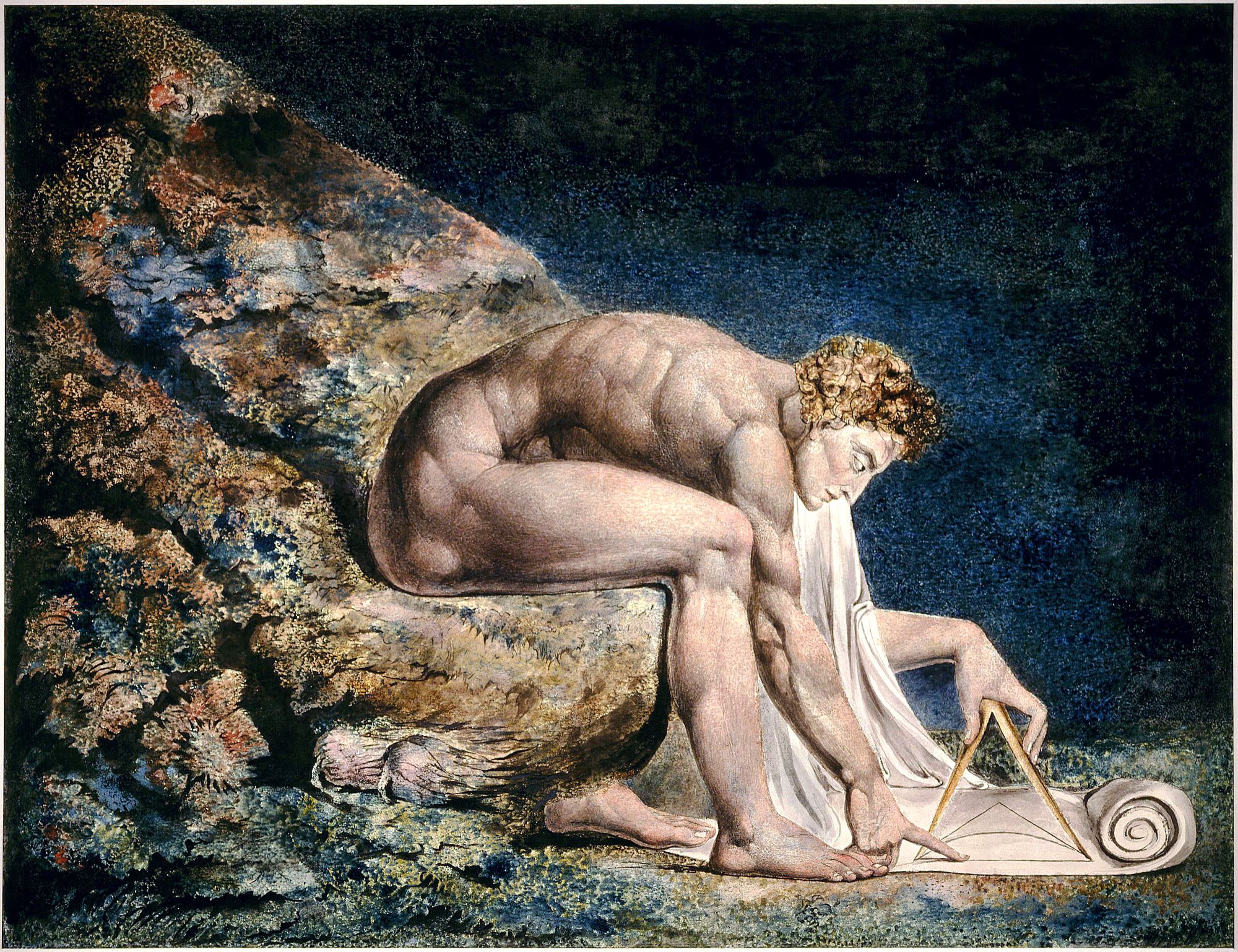
“Before these results can be of any use […] it is necessary to tie them together, so to speak, in bundles, to group them and to relate them to each other”, Bernal continues, “[leading] to the continuous creation of the more or less coherent edifice of scientific laws, principles, hypotheses, and theories.”[14]
Another important aspect of science is that of a social institution, composed of organisations and dedicated professionals responsible for conducting research, sanctifying hypotheses and results, and providing the baseline for future investigation.
And in its most general sense, science represents society’s cumulative and collective body of knowledge.
In this respect, examining the history of science, one can see a tendency towards progress – although this is by no means linear. Our understanding of the world, in general, increases over time.
Each successive generation of scientists builds upon the work of their predecessors. In the words of the famous physicist Isaac Newton, those pushing the boundaries of human understanding do so by “standing on the shoulders of giants”.
And we would add: not only by developing the ideas of individual ‘men of genius’. Science relies on the vital contributions of thousands and millions of ordinary men and women who keep the machinery of scientific research oiled and running, and upon the impetus from – and discoveries thrown up by – industry and human labour.
The development of knowledge
Returning to our central question: how does science – in the sense of a systematic understanding of natural processes and phenomena – develop and progress?
Marxists understand that reality is objective, existing independently of human beings and our consciousness. At the same time, nature is knowable. Through practice, by interacting with our surroundings, we can uncover the dynamics of matter in motion at every level.
Over time, science builds up a clearer and more complete picture of the world. Through investigation and experiment, our understanding of natural phenomena improves, becoming richer and more refined.
What was once unknown and shrouded in mystery becomes known and understood. Ignorance is replaced by rational comprehension and cognition. We begin to see relations, patterns, and order; the necessity behind the ‘accidental’, expressed as scientific laws.
This is the basis for real knowledge, providing greater mastery over nature, and thereby opening up the possibility of new insights and techniques.
Such knowledge, however, is always relative. The universe is infinitely complex. Everything is interconnected, in a state of flux, with different dynamics arising and occurring at different levels – from the subatomic to the galactic.
The relations governing the quantum scale are qualitatively different from those for organic matter, for example. Although we are all composed of particles, we cannot reduce biology to a branch of quantum physics. Similarly, social relations cannot be reduced to Darwinian evolution and the laws of natural selection.
Every phenomenon and process must therefore be studied concretely, to uncover the dynamics, tendencies, and interrelations that apply to the system in question.
Our scientific theories, laws, and models are all relative approximations of these processes; attempts to describe and explain material motion and reality within certain limits. No theory can fully encapsulate any given phenomenon.
An “exhaustive scientific exposition” of the interconnections of nature, Engels notes in his brilliant polemic Anti-Dühring, “is impossible for us, and will always remain impossible”.[15]
Nevertheless, through the “endless progressive development” of science, Engels continues, successive generations improve these theories and models, and deepen humanity’s knowledge of natural phenomena.
In this way, Lenin explains in his philosophical masterpiece Materialism and Empirio-criticism, the ‘relative truth’ contained in our theories draws nearer to the ‘absolute truth’:
“Each step in the development of science adds new grains to the sum of absolute truth, but the limits of the truth of each scientific proposition are relative, now expanding, now shrinking with the growth of knowledge.”[16]
This recognition of the relative nature of our scientific models, however, does not mean that Marxists are ‘relativists’, denying the existence of an objective, knowable reality, as postmodernists do. As Lenin emphasises:
“The materialist dialectics of Marx and Engels certainly does contain relativism, but is not reducible to relativism, that is, it recognises the relativity of all our knowledge, not in the sense of denying objective truth, but in the sense that the limits of approximation of our knowledge to this truth are historically conditional.”[17]
Every ‘truth’ discovered by science, in other words, will always contain a level of error. Theories and models will only ever remain valid up to a point. Eventually they will break down, and will need to be deepened; further refined and enriched, ad infinitum.
Thus we see the never-ending unfolding of science towards higher levels of knowledge and understanding – a process that is never ‘complete’ or ‘finished’.
“The long historical development of science”, Engels summarises, “mounts from lower to ever higher levels of knowledge without ever reaching, by discovering so-called absolute truth, a point at which it can proceed no further.”[18]
Structure of scientific revolution
How, then, in general, does the scientific method help to advance scientific progress?
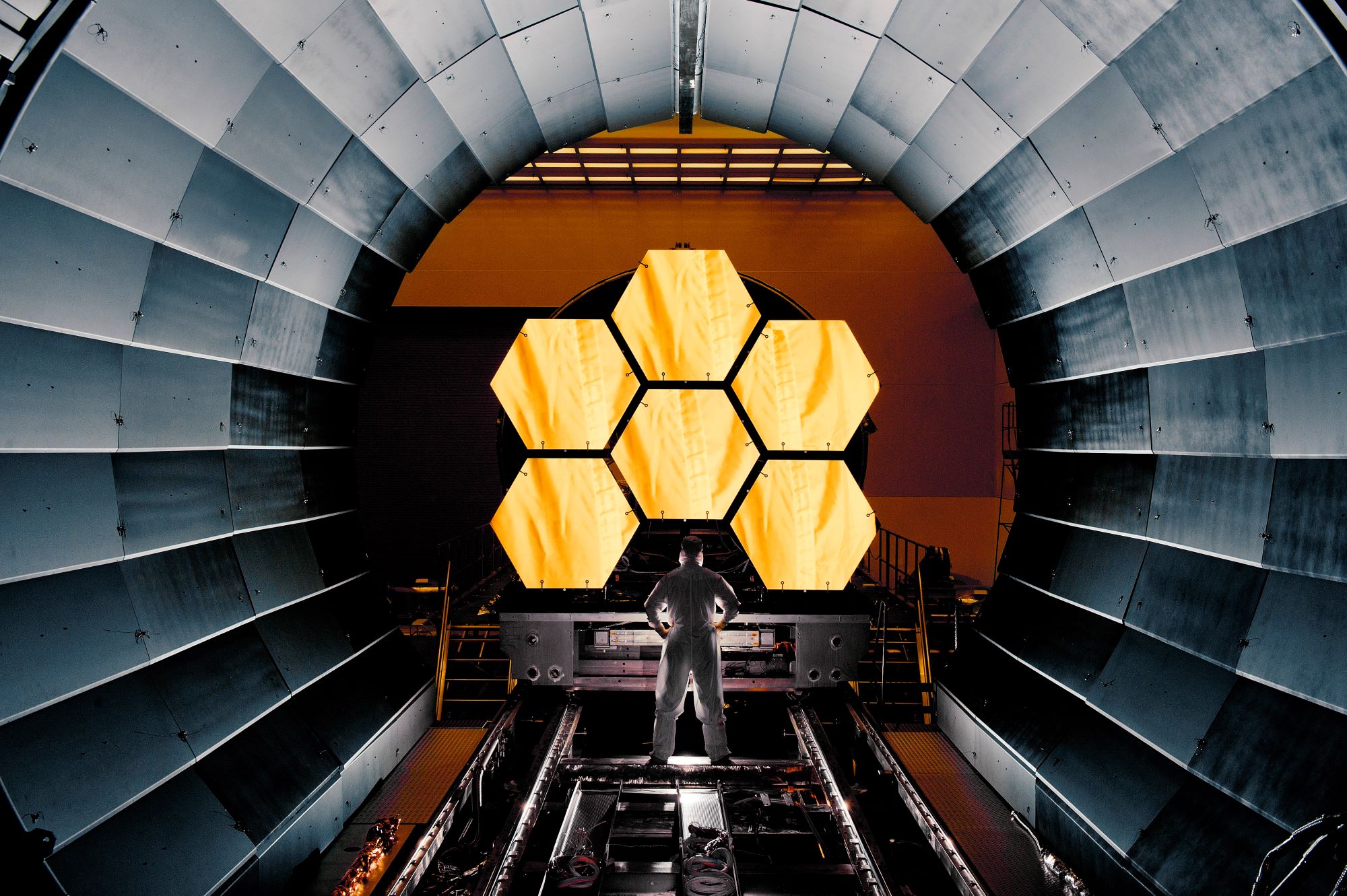
In his unfinished work on the Dialectics of Nature, Engels provides the broad brush strokes of the process.
“The form of development of natural science”, he explains, “is the hypothesis.” At a certain point, however, further observations and facts come into conflict with the commonly-accepted hypothesis. “From this moment onwards”, Engels continues, “new methods of explanation are required”, capable of absorbing the latest data.[19]
The old theory is not completely abolished or invalidated in this process, but is dialectically negated. The new model incorporates all that is true in its predecessor. At the same time, it goes further, providing the ability to rationally explain new observations and make additional, more precise predictions.
This progressive accumulation of scientific knowledge is not linear, however. Periods of stagnation and even decline, leaps and revolutions, are just as much a part of scientific development as they are of social development.
This dialectical process of scientific progress was further outlined by twentieth-century philosopher of science, Thomas Kuhn, in his marvellous book on The Structure of Scientific Revolutions.
Studying the history of science, with examples from a range of fields, Kuhn showed how science does not progress gradually, in a straight line, but through a process of incremental advances followed by occasional surges and jumps.
The majority of researchers, for the majority of their lives, he says, are engaged in what he describes as ‘normal science’, composed of ‘puzzle solving’. Working within a given theoretical framework or school of thought, the mainstay of most scientific careers involves applying existing ideas to new problems and examples, not in developing fresh hypotheses.
Kuhn popularised the term ‘paradigm’ to describe these frameworks and schools of thought. In any period, within a certain subset of the scientific community, there will be a dominant paradigm that provides the guidelines within which research is conducted.
‘Normal science’ mostly consists of “mopping-up operations”, Kuhn says, “extending the knowledge of those facts that the paradigm displays as particularly revealing, by increasing the extent of the match between those facts and the paradigm’s predictions, and by further articulation of the paradigm itself.”[20]
At a certain point, however, in the process of conducting ‘normal science’, researchers stumble across anomalies: phenomena that cannot be explained by the old paradigm. This, Kuhn states, prompts a “recognition that nature has somehow violated the paradigm-induced expectations that govern normal science”.[21]
A small number of such anomalies may not initially lead to any questioning of the existing theory. It may be assumed that some misunderstanding or experimental error will be found as an explanation. But a build-up of such discoveries eventually spurs certain layers within the community to seek alternative explanations; to formulate a new paradigm.
Scientific progress, in other words, is not generally as consciously directed as common lore would have us believe. Discoveries and breakthroughs are not simply the product of individual ‘men of genius’ being struck by a ‘Eureka!’ moment. They are the result of an accumulation of contradictions – arising in the course of conducting routine research – that eventually burst to the surface.
As Khun explains:
“Normal science does not aim at novelties of fact or theory and, when successful, finds none. New and unsuspected phenomena are, however, repeatedly uncovered by scientific research, and radical new theories have again and again been invented by scientists.”[22]
The transition from one paradigm to another, however, is never a smooth process, Kuhn notes. Instead, such ‘paradigm shifts’, he explains, necessarily require a period of crisis within the community.
An old guard, with a personal and quite often material interest in maintaining the existing model, will tend to resist change, and cling to their antiquated ideas. Instead of accepting the need for a new theory, they will seek to adapt their outmoded framework – even when this becomes increasingly untenable, and the build-up of anomalies can no longer be ignored.
In modern times, the defenders of the old paradigm will often be those who occupy senior positions within scientific institutions, having built large departments and powerful reputations on the basis of advancing a particular theory.
In this way, a scientific establishment develops within a given field. And having previously taken the subject forward, these esteemed ladies and gentlemen eventually become a barrier to further progress.
The more ‘disruptive’ – the more fundamental – a paradigm shift is to a given field, the more careers it touches upon.
For similar reasons, Kuhn remarks, it is no coincidence that those who introduce new, alternative paradigms are often ‘outsiders’, coming from a new generation that has not been inculcated in the old orthodoxy and ossified paradigm.
A ‘paradigm shift’ therefore entails the overthrow of an existing model, and its replacement by an entirely novel one; not a simple modification or patching-up of the current theory, but the necessary displacement of one world view in favour of an outlook that retains the rational kernel of the old, but on a new basis.
This is why Kuhn consciously chooses the phrase ‘scientific revolution’ to describe this process – and even explicitly draws the analogy with social and political revolutions.
Like political revolutions, he notes:
“scientific revolutions are inaugurated by a growing sense […] that an existing paradigm has ceased to function adequately in the exploration of an aspect of nature to which that paradigm itself had previously led the way”.[23]
This “sense of malfunction”, in turn, provokes a crisis, with the choice between competing paradigms representing “incompatible modes of community life.”[24]
Kuhn gives a variety of examples to demonstrate this “structure of scientific revolutions”. The overthrow of Newtonian mechanics by Einstein’s theory of relativity was one such revolution.
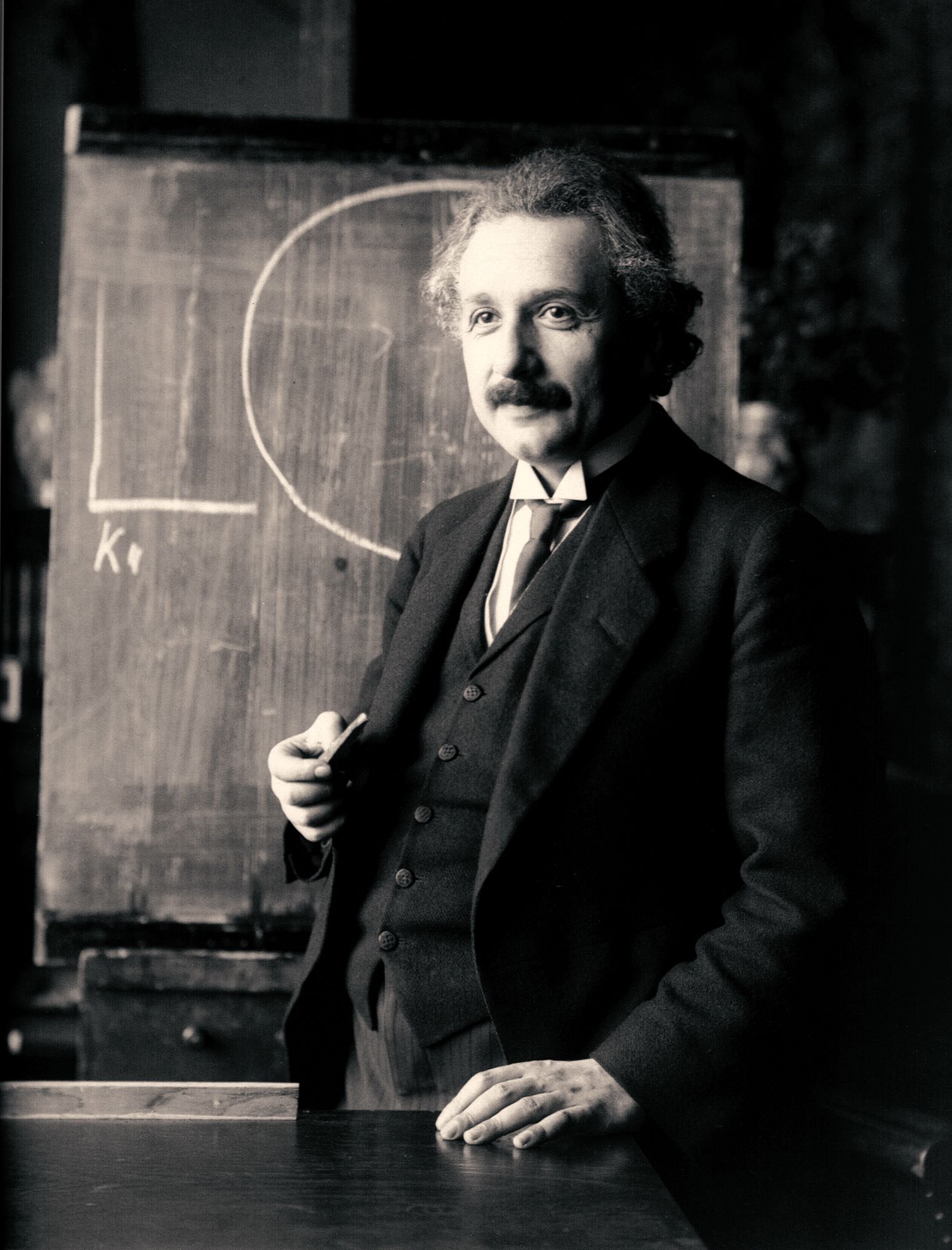
Newton described the universe as a clockwork mechanism, governed by absolute time and space, where time ticked uniformly and space was a fixed backdrop for motion. This Newtonian view of the universe had held sway for 200 years.
Such was the apparent success of this framework that physicist Lord Kelvin allegedly remarked in the late 19th century: “There is nothing new to be discovered in physics now. All that remains is more and more precise measurement.” Physics seemed a mere ‘mopping up operation’, as Kuhn put it.
Yet unresolved problems lingered. Light’s behaviour defied explanation. Experiments failed to detect the ‘luminiferous ether’, the supposed medium for its travel.
Contradictory results piled up, and other anomalies emerged, such as particles gaining inertia at high speeds – phenomena Newtonian physics couldn’t explain. The accumulation of these contradictions opened up a crisis in science.
It was in this context that a young patent clerk, Albert Einstein, upended physics with his theory of special relativity. This, along with his later theory of general relativity effected a brilliant scientific revolution, showing how time and space themselves could warp, expand, or contract in different frames of reference.
The same process of scientific development can be discerned in all fields: from our understanding of light and optics, to the field of chemistry and the discovery of new elements.
Firstly, a quantitative build-up of research within a given framework paves the way for a crisis, as the existing theory comes into contradiction with the newly-observed phenomena.
Eventually, a rupture takes place within the scientific community, as the old elites and their ideas are challenged by a new wave of researchers, promoting an alternative, superior model, with greater explanatory power.
Finally, the new paradigm wins out; a qualitative leap occurs, involving a radical shift in perspective within the field; and the march of scientific progress continues – until the next crisis and revolution.
“The greatest difficulty of discovery is not so much to make the necessary observations”, remarks Bernal, “but to break away from traditional ideas in interpreting them.”[25] He continues:
“From the time when Copernicus established the movement of the earth […] the real struggle has been less to penetrate the secrets of nature than to overthrow established ideas, even though these, in their time, had helped to advance science.”[26]
Scientific theories and models, Bernal concludes, must therefore “be continually and often violently broken down from time to time, and remade in the face of new experience in the material and social worlds.”[27]
Thus we see dialectical motion not only in nature and society, but in the development of knowledge and thought itself.
Periods of progress
Scientific progress in any given field, then, does not occur in a straight line. Every branch or area of science has developed over time through a series of crises and revolutions.
On a broader scale, however, looking at history, it is also clear that such scientific revolutions do not occur evenly or randomly. Bernal notes:
“The progress of science has been anything but uniform in time and place. Periods of rapid advance have alternated with longer periods of stagnation and even of decay.”[28]
“But the where and when of scientific activity are anything but accidental”, Bernal continues. “Its flourishing periods are found to coincide with economic activity and technical advance.”[29]
In other words, to appreciate the broad sweep of scientific progress, we must investigate and understand the relationship between science and society.
In doing so, we see that there are material factors that propel science forward across a range of disciplines in some eras, and which retard it in others. Individuals certainly play a role, but only under the right conditions; in social, economic, and political environments that are conducive to the exploration and generation of new ideas.
The lack of such a perspective was one of the major limits of Kuhn. Whilst he provided many historical examples of paradigm shifts within various branches of science, he did not explain how and why these scientific revolutions were relatively concentrated in certain epochs and places and not others.
The great progress and advances made by science in modern times, for example, from the sixteenth century onwards, coincided with the early development of capitalism.
The feudal aristocracy was based on a conservative, rural, manor-based economy. And it was entangled with the Church and all the mystical, religious, and superstitious nonsense that played an important role in maintaining its rule.
In contrast, the nascent capitalist class had an interest in advancing science; in understanding the world in order to change it – to their advantage.
The first step of the Scientific Revolution inaugurated by the rising bourgeoisie had to be to break with the domination of the Church. The starting gun was fired by Copernicus. His book, De revolutionibus orbium coelestium, sought to overthrow the old earth-centred (geocentric) view of the universe in favour of a sun-centred (heliocentric) view.
And, once the challenge it represented was recognised, it met with furious resistance from the Church, for whom geocentrism formed a cornerstone of a divinely-ordained universal order.
The old view actually had its successes: it explained how the sun, moon, and stars all revolve in circles through the night sky. But other things were more complex, such as the peculiar motion of the planets. To explain this, it was supposed that planets move along small circles called ‘epicycles’, which in turn move along larger circles centred on the earth called ‘deferents’.
These ‘circles within circles’ kept accumulating to keep pace with more accurate measurements. By Copernicus’ day, the system encompassed some 80 circles to explain the motions of the five known planets.
Cosmology was in crisis. But if truth be told, it had been in crisis for centuries before Copernicus came along.
The old system was crying out for a revolution. But it wouldn’t be possible until a revolutionary class in society, producing bold thinkers, took up the struggle to free science from the suffocation of Church dogma.
Science develops according to its own laws, in other words, but these do not take place in a vacuum. When a paradigm enters into crisis, that crisis can become protracted because of social, political, and economic factors dragging on science.
Capitalism and science
The rise of the bourgeoisie gave an enormous impetus to science on every front. Commerce and navigation, in search of new markets and sources of profit, required new technologies, which in turn led to accompanying scientific discoveries.
As Engels notes:
“Real natural science dates from the second half of the fifteenth century, and thence onward it has advanced with constantly increasing rapidity. The analysis of nature into its individual parts, the grouping of the different natural processes and objects in definite classes, the study of the internal anatomy of organic bodies in their manifold forms – these were the fundamental conditions of the gigantic strides in our knowledge of nature that have been made during the last four hundred years.”[30]
Innovations like the polished lens helped deepen scientists’ knowledge of light and optics. The invention of the telescope added empirical evidence to support the Copernican view. Pendulum clocks for accurate time-keeping spurred on advances in mechanics. And thermometers and barometers for measuring temperature and pressure stimulated a greater understanding of the properties of liquids and gases.
In this period, science, philosophy, and religion – previously intertwined inside the feudal establishment – began to separate out. And distinct branches of science started to form, with specialist thinkers focusing their investigations more narrowly on particular aspects of nature.
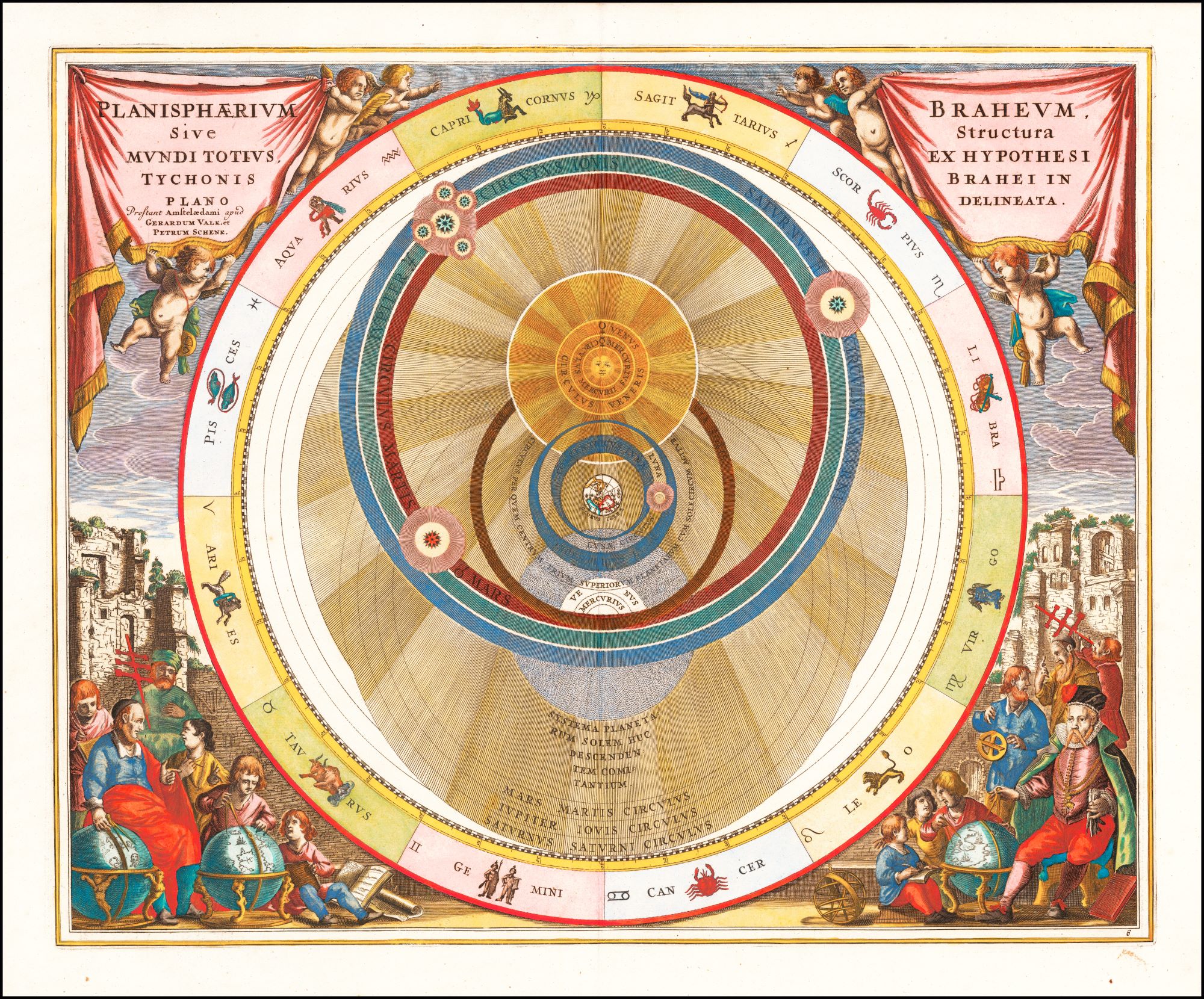
Philosophers such as Francis Bacon and René Descartes were a product of this emerging bourgeoisie and its break with the stultifying impact of the old religious order. They helped to develop and promote a systematic, rational, scientific method of thought, based on empirical observation, experimentation, and inductive and deductive reasoning. With the help of the printing press, meanwhile, knowledge was able to spread faster and wider.
Later, on the back of the bourgeois revolutions in England and the Netherlands, in particular, came the great thinkers of the Enlightenment. Their insistence on reason and contempt for mysticism provided a further boost to scientific progress.
The industrial revolution of the eighteenth and nineteenth centuries accelerated these processes. The introduction of large-scale machinery into production required new technologies and techniques. And this, in turn, meant applying scientific knowledge to all aspects of industry.
“Once the industrial revolution was well under way, the position of science as an integral part of civilisation was secure”, comments Bernal elsewhere. “In a thousand ways, science was necessary both in measuring and standardising industry and in introducing economies and new processes.”[31]
New paradigms ushered in by revolutions in thermodynamics, electromagnetism, and chemistry led to the invention of the internal combustion engine, the electric motor, the telegraph, and synthetic fertiliser, amongst other key innovations, alongside improvements to existing technologies like the steam engine.
The main driving force behind these new technologies was not scientific, but economic. The concept of a steam-powered engine, for example, had existed since ancient times. But this was only fully developed and widely applied under capitalism, where the profit motive provided an impetus to increase the productivity of labour.
The machinery introduced into production during the industrial revolution, in this respect, embodied the ‘dead labour’ of generations of scientific research and understanding, replacing the living labour of skilled workers with automation based on a harnessing – and deepening – of our knowledge of natural forces.
Barriers to progress
Throughout history, then, we see how developments in science are intimately tied to the development of the productive forces. Fundamental changes in social relations radically transform society and, with it, all the old ideas and traditions – paving the way for qualitative leaps forward in human knowledge and thought.
But the same is also true in reverse. When an economic system begins to stagnate and reach an impasse, this is reflected in all walks of life – including in science.
Social and economic relations that had promoted scientific development turn into their opposite. That which was once progressive becomes retrograde and reactionary.
In its heyday, the capitalist class sought a materialist understanding of the world, in the service of their economic interests. This gave a tremendous boost to the advance of science. The motor force of profit and competition spurred on a colossal development of the productive forces.
But now the capitalist system, including the so-called ‘free’ market, has become an enormous fetter on science and technology. Capitalist social relations – most notably, private property and the nation state – have become gigantic barriers to progress in all areas of society, including science.
Under capitalism, ideas themselves have become private property, in the form of ‘intellectual property rights’ (IPR) and patents. And this private ownership over knowledge has, in turn, stifled the possibilities and potential of advancing research.
Ultimately, all scientific knowledge is socially produced: the result of generations of advances. All breakthroughs in science require the prior knowledge accumulated over centuries of hard labour.
To be most effective, science requires collaboration and communication; a sharing of ideas and methods across many teams, institutions, and countries. Yet, under capitalism, a ‘winner takes all’ attitude prevails. Social knowledge becomes private property, secretly guarded by the big monopolies to protect their markets and profits.
Rather than organising all of the intellectual and scientific resources available to humanity, in order to solve society’s problems, research is split up in the name of competition. The fruit of this labour – the development of new technologies and techniques – is then privately appropriated for the sake of profit.
Not only does this narrow the scope of scientists’ work, but it also makes their output inaccessible to a wider audience, both within the scientific community and in society more broadly. In turn, society becomes alienated from science, creating a breeding ground for crackpot ideas and conspiracy theories.
IPR are therefore one of the most disgusting symptoms of the parasitic nature of capitalism, which privately appropriates the products of social labour.
Academic competition
One might assume that such competition, with its inefficiency and waste due to the duplication of efforts, would be consigned to the private sector. Surely public sector research, conducted in publicly funded universities, would be free of such anarchic competition?
Unfortunately, this is not the case. Instead, we see that the laws of capitalist competition are felt just as sharply inside public institutions.
Teaching and learning conditions are suffering under the impact of austerity. And as higher education becomes increasingly marketised, privatised, and cut to the bone, big business is gaining ever-greater influence over university science departments and their research agendas.
Starved of funding from central governments, academics are forced to spend increasingly large proportions of their time begging for scraps from wealthy patrons and corporate sponsors. And he who pays the piper calls the tune.
In order to guarantee the survival of their departments and their jobs, professors and their teams, as paid wage workers, must justify their existence by constantly producing new research.
This precarity leads to a problem known in the sector as ‘publish or perish’: the pressure to churn out scientific papers in high quantities to impress those dishing out grants, never mind the quality.
In turn, this creates a toxic environment for science, perversely encouraging researchers – including PhD students and postdocs hunting for scarce jobs in academia – to take shortcuts, rush their work, lower their standards, overlook errors, massage and cherry-pick results, exaggerate the significance of their findings, and even promote entirely ‘fake news’.
This is the material backdrop behind the concerns about bogus papers and the reliability of research discussed earlier. This is not down to outright fraud in most cases, but due to the pressure that scientists are under to make ‘significant’ findings, leading to biases. To be sure, however, actual fraud is also on the rise.
This demand by those funding science for immediate returns on their investments also partially explains the conservative tendency in academia towards prioritising short-term, deliverable results over long-term, creative – but generally unprofitable – ‘blue skies’ scientific exploration.
Similarly, to advance and maintain their careers, academics are required to carve out and defend a niche for themselves, strengthening those parochial, stubborn attitudes that Kuhn describes in explaining the dynamics of scientific crises and revolutions. Rather than remaining open to new theories, senior academics have a material reason to dig their heels in if a new disruptive theory challenges their position.
Furthermore, to grab a share of the ever-shrinking pool of funds, academics must publish their research before those in rival institutions get there first. This cut-throat competition results in universities and their researchers racing against one another to reach the finish line, rather than collaborating by sharing data, methods, and findings.
The waste and inefficiency of such an atomised approach is self-evident. And this contradiction is only heightened as the quantity of prior literature grows and the scale of science expands, requiring greater organisation and cooperation of research to continue pushing the boundaries of human knowledge.
Thus we see how crisis-ridden capitalism, by creating conditions of scarcity and insecurity, gives rise to competition even within the public sphere, thus holding back the possibilities and potential of scientific research in all fields.
The contradiction, of course, is that this want under capitalism is completely artificial. The real situation is that of poverty amidst plenty.
The same anarchy of competition is replicated and amplified at an international scale, with multinational monopolies and nation-states erecting all manner of barriers to prevent worldwide scientific collaboration.
Imperialism today is actively thwarting the cooperation needed to advance science. This has been made patently clear in recent years by the ruling class’ inability to collectively tackle global problems like the climate catastrophe.
A recent article in the Financial Times, for example, reports that “rising tensions between the US and China threaten to sever a 45-year-old science and technology pact”, known as the Deng-Carter accord, “hindering the superpowers’ collaboration in critical areas”.[32]
Furthermore, these same “rising tensions” between the major imperialist powers are leading to an ever-greater squandering of society’s economic, industrial, and scientific resources on producing weapons and arms – not the means of production, but of death and destruction; not books, but bombs.
Gatekeepers of knowledge
Another clear example of the straightjacket of private property is the prisonhouse of ideas created by profit-hungry publishing companies.
The academic journal industry, like every other under capitalism, is highly monopolised. A ‘big five’ – Elsevier, Wiley, Taylor & Francis, Springer Nature, and SAGE – dominates the market. Each of these firms rake in billions in revenue every year. Some have profit margins approaching 40 percent.
The whole setup is a scam. Academics do the research, write the articles, and volunteer to provide peer-review. Yet their cash-strapped university employers, who already fund this work, are forced to hand over extortionate subscription fees to gain access to the content of these journals, which otherwise remains blocked and locked behind a paywall.
In addition, profit-driven business models – in combination with the ‘publish or perish’ pressures within academia – have contributed towards an explosive growth in the quantity of papers being published every year.
According to one recent study, this is placing an increasing “strain on scientific publishing”, further undermining the quality, reliability, and credibility of research and findings highlighted in supposedly reputable journals.
At the head of the publishing industry, meanwhile, sits a scientific establishment, akin to that described by Kuhn.

Journal editors and archive moderators act as the gatekeepers of science, deciding what research is read and what is rejected. And there are many stories of alleged blacklisting and censorship against academics who dare to challenge the existing paradigm.
Modern-day Copernicuses and Einsteins, in other words, would find themselves suppressed and silenced by those at the top today.
“They consider themselves the defenders of scientific orthodoxy, just like the medieval Church”, states Wanpeng Tan from the University of Notre Dame, discussing the shadowy practices of physics preprint service arXiv.org.
“ArXiv’s bully behaviours as a monopoly”, he concludes, have “made new (especially non-orthodox or disruptive) ideas hard to spread.”[33]
Thus we see the key role that this academic-industrial complex plays in the stifling and stagnation of science.
‘Pure’ science
Science has not always been conducted in the form it is today.
It was in the nineteenth century that science began to solidify as a network of interrelated institutions. Scientific societies and journals were established, alongside new universities. And a community of professors, researchers, and intellectuals emerged, populating these bodies.
The age of the enthusiastic amateur – the gentleman scientist or collector – was over.
These learned ladies and gentlemen increasingly saw themselves as separate and removed from the rest of society: as a caste of academic guardians, responsible for uncovering and safekeeping the secrets of the universe. This gave rise to the concept of ‘pure science’, composed of ‘independent’ intellectuals, divorced from society.
On the one hand, this enduring, deep-rooted notion of ‘pure science’ has played a certain progressive role, encouraging academics to pursue knowledge for knowledge’s sake, free from immediate practical or financial concerns, or from any utilitarian impact of their studies.
“From the socio-historic standpoint, science is utilitarian. But this does not at all mean that each scientist approaches problems of research from a utilitarian point of view. No! Most often scholars are motivated by their passion for knowledge, and the more significant a man’s discovery, the less is he able as a general rule to foresee in advance its possible practical applications.”[34]
On the other hand, purely theoretical – ‘ivory tower’ – science has a tendency to become so detached from the rest of the world that it devolves into meaningless pedantry and sophistry, allowing idealism to creep into science.
This can be seen today in the field of theoretical physics, where armchair academics debate the possibility of 10-dimensional space-time composed of vibrating strings, judging the correctness of their hypotheses solely according to the aesthetic qualities (or otherwise) of their equations.
Philosophy and ideology
Science must ultimately be linked to – and refreshed by – practical, social activity. However, science is not merely a continuous advance of technologies and techniques. It is also a body of theoretical knowledge that provides a framework for further investigations and applications.
Scientists therefore also require a conscious philosophical method to guide their explorations; to help illuminate the path that researchers should pursue.
The hyper-specialisation seen in contemporary science, however, whilst necessary given the vast scale of existing knowledge and research that academics must collectively cover, is not conducive to such an outlook.
Given the material pressures and anarchy of competition outlined above, most academics do not have the time, means, or freedom to thoroughly discuss, debate, and dissent; to collaborate and cross-fertilise ideas; to explore and test trailblazing hypotheses and methods; to step back and think about the ‘bigger questions’.
In fact, more often than not, there is a disdain towards – or rejection of – philosophy (perhaps unsurprisingly, given what passes for ‘philosophy’ in most universities these days).
Instead, science today tends to be conducted according to a narrow form of empiricism, based solely on an examination of ‘the facts’, without any appreciation of the wider perspective, underlying processes, or many-sidedness of the problem under scrutiny.
And this dearth of philosophy in science is one of the many factors contributing towards its present impasse.
Without a conscious philosophy, scientists are just as prone as laymen to unconsciously adopt the philosophical prejudices that predominate in society. Inevitably, these are the ideas emanating from the ruling class.
For many, the role of science in society is sacrosanct and unquestionable. Scientists – and the institution of science as a whole – are assumed to be infallible and objective: free of any bias; uninfluenced by the petty politics and societal pressures that the rest of us imperfect beings succumb to and worry about.
But ‘science’ is not a mystical force, existing external to society. Rather, it is a set of institutions, composed of living human beings, situated in a real material world, subject to – and shaped by – the same economic, social, and political forces as the rest of us.
This includes all the pressures and prejudices that come with class society, which seep into science and affect the outlook of those operating within it.
Science itself emerged with the earliest separation between mental and manual labour, which arose with the division of society into classes. For the first time in history, a layer of society was freed from manual labour to develop writing, mathematics, and astronomy.
Ever since these early beginnings of science, it has thus been the preserve of a privileged minority. This is as true today as it was of the priests of Egypt.
“To expect science to be impartial in a wage-slave society”, Lenin therefore stresses, “is as foolishly naive as to expect impartiality from manufacturers on the question of whether workers’ wages ought not to be increased by decreasing the profits of capital.”[35]
In the final analysis, as with all other aspects of society, it is the interests of the ruling class that mould and direct science. As Marx and Engels explain in the German Ideology, those at the top “regulate the production and distribution of the ideas of their age: thus their ideas are the ruling ideas of the epoch”.[36]
Advances of science continually force a retreat of mysticism and idealism. But these pernicious trends will never fully be expunged from science, as long as class society exists. Idealistic tendencies will always reappear, seeking to pull the wool over our eyes, in order to justify and maintain the current state of affairs.
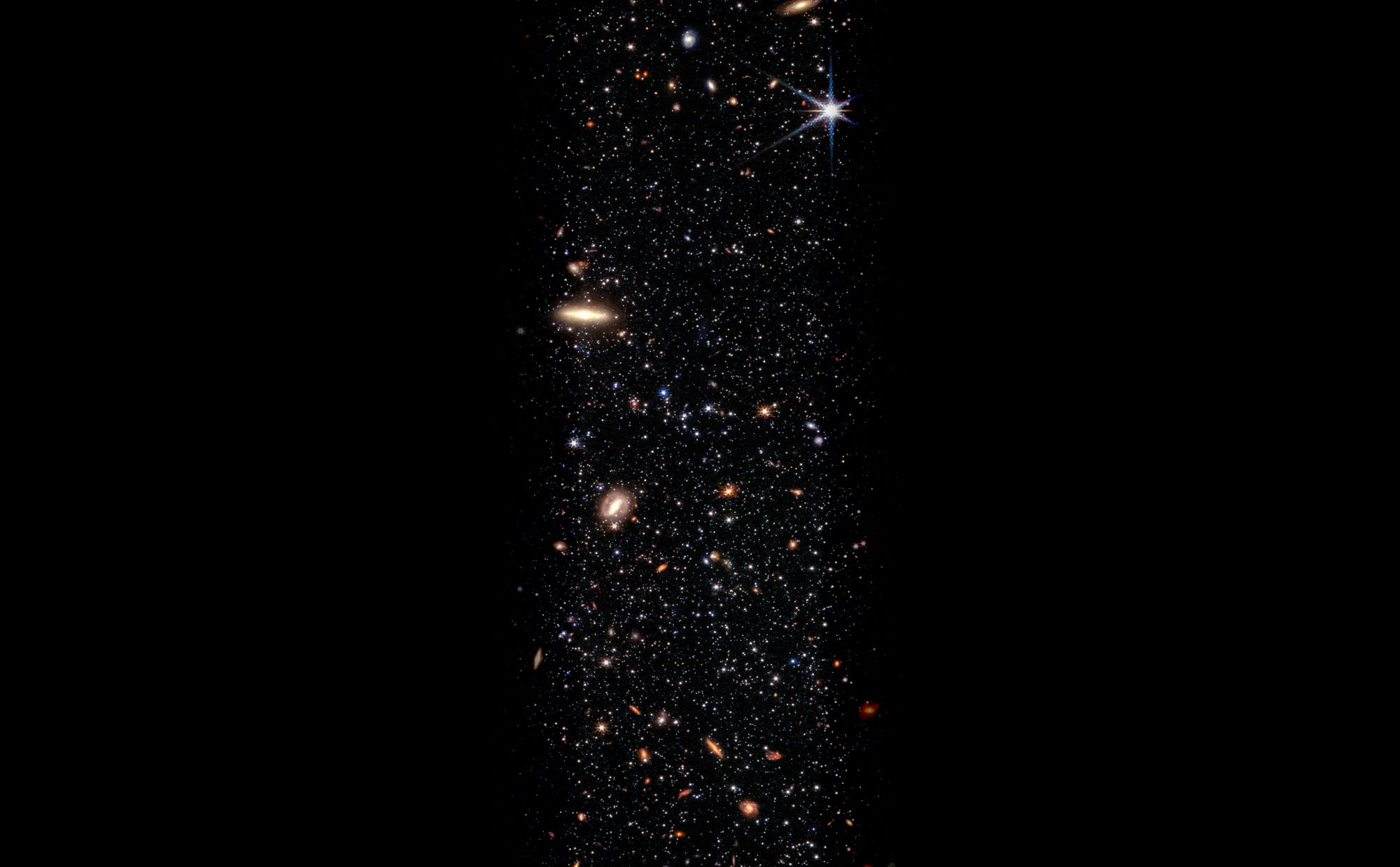
For the ruling class, real insight into how the universe works can be dangerous. Such a worldview reveals nature and society to be dynamic and changing, not rigid and static.
Such an understanding removes the God-given basis for the present order, and provides ordinary people with the perspective that the status quo can be transformed and overturned, threatening the position and privileges of those at the top.
That is why the establishment down the ages has resisted – or even outright repressed – major materialist advancements in science: from the Church’s repression of Galileo, as a champion of Copernican heliocentrism; to the bourgeois scorn and scepticism poured on Darwin’s theories of evolution.
And it is why obscurantist ideas are constantly promoted within the sciences today: from the idealistic Copenhagen interpretation of quantum mechanics; to the solipsistic denials of objective reality referred to above.
The pessimism of the ruling class in its advanced state of decay; its turn away from reality towards irrationalism; its cynical promotion of mysticism to support and justify its rule: all of these weigh down upon and oppress the minds of men and women, not least in the sciences.
It is for this reason that Marxists must take an active interest in the debates taking place within modern science; and why we, as Lenin stated, have an “absolute duty to enlist all adherents of consistent and militant materialism in the joint work of combating philosophical reaction and the philosophical prejudices of so-called educated society”.[37]
Communist potential
All of these factors are holding science – and thus society in general – back.
These fetters, at root, are the product of capitalism, which, through the anarchy of the market, the private ownership over the means of production, and the logic of profit, creates crisis, scarcity, and waste across society.
Meanwhile, profound alienation breeds a sense of distrust and scepticism among broad layers towards all the pillars of the existing order, including official science. This can be seen by the growing support for conspiracy theories and religious fundamentalism, and for the charlatans and demagogues who push these ideas, quite often for political purposes.
In turn, as the crisis of capitalism deepens, the ruling class is increasingly eroding and attacking the conditions of scientists themselves.
The academic profession is being proletarianised. Professors, lecturers, and researchers are being pulled down from their ivory towers, and into the working class. And they are getting organised in order to fight back against university bosses.
In Britain, for example, education workers across the board – in schools, colleges, and campuses – have repeatedly taken strike action in recent years over jobs, wages, and workloads. Similarly, staff at Nature and other leading science journals have walked out recently in a dispute over pay.
This confirms Marx’s assertion: that capitalism “has stripped of its halo every occupation hitherto honoured and looked up to with reverent awe. It has converted the physician, the lawyer, the priest, the poet, the man of science, into its paid wage labourers.”[38]
But it also shows the way forward for liberating science from its current shackles.
As a component part of the organised working class, scientists need to fight to upend this rotten system; to kick capitalism and imperialism out of education; and to convert universities from sources of private profit into sanctuaries of learning, by placing them under the democratic control of staff and students.
Only by overthrowing capitalism, and ending class society altogether, can we eliminate the pressures of profit and competition from academia; abolish the rigid divide between mental and manual labour, opening up education and culture to millions hitherto excluded from it; and rid science of all traces of idealism, mysticism, and obscurantism.
The scientific insights made by Marx and Engels, on the basis of dialectical materialism, offer a glimpse of the potential for science, if only it were placed on thoroughly rational foundations, with research guided by human need, not private profit.
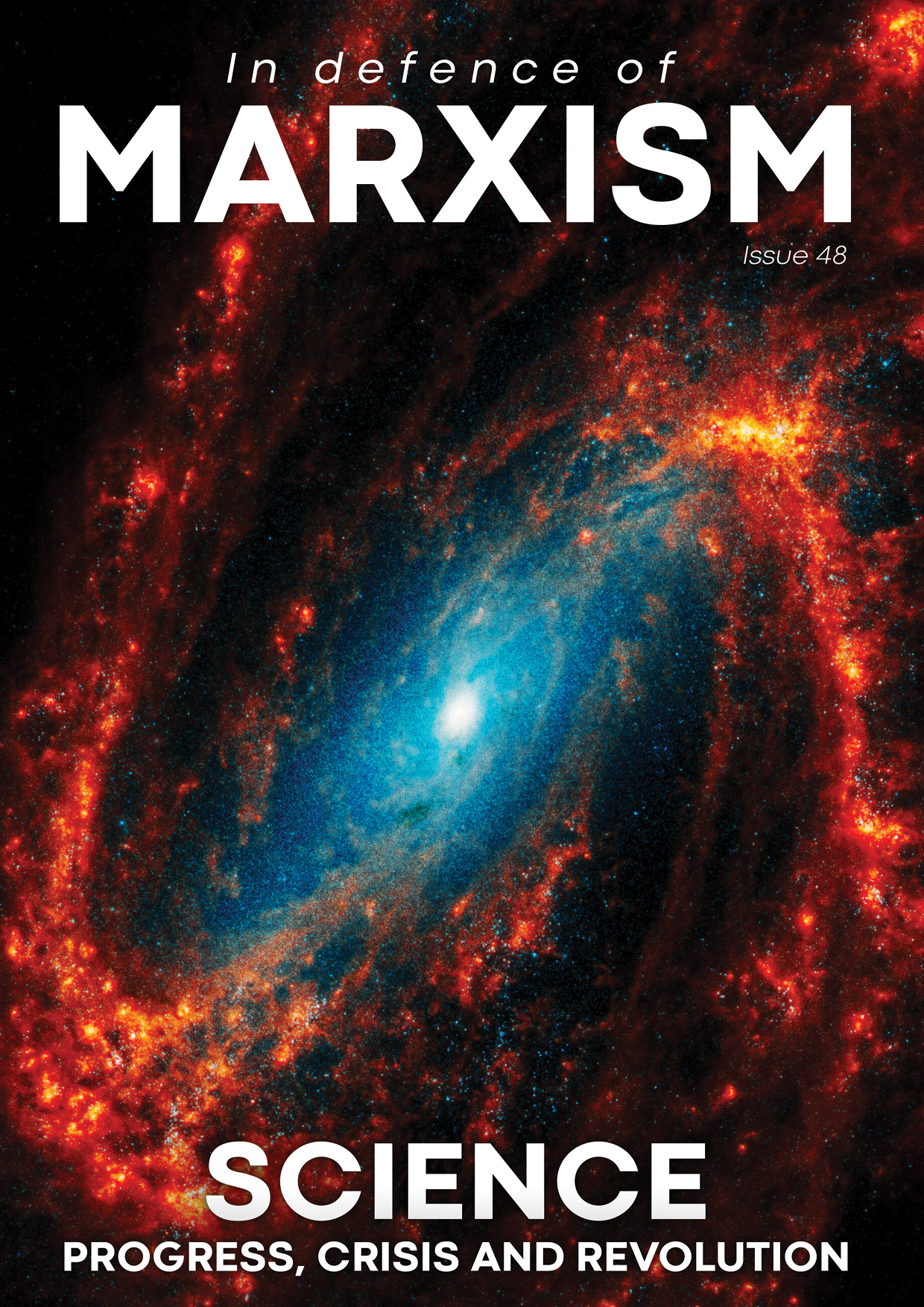
With a socialist planned economy, we could consciously and democratically organise society, applying scientific methods and understanding to all areas of nature and human activity.
Instead of a cleavage between theory and practice, science would be inseparable from daily life, with different fields and disciplines brought under one umbrella, in pursuit of a common goal.
On the one hand, science under socialism would be closely linked to practical social needs. On the other, scientists would be provided with the time and resources needed to conduct broader research into new theories and ideas.
On this basis, we could slash the hours of the working week; provide ordinary people with the leisure time and resources to pursue science, politics, and culture; and thereby involve the masses in the running of production.
Science would therefore no longer be the preserve of an elite – an aloof and alien institution, disconnected from the rest of society – but a part of everyone’s lives.
Every worker and peasant currently trapped and exploited in the factories and fields would gain access to quality cradle-to-grave education and learning, giving the whole of humanity the opportunity to fulfil their scientific and artistic potential, and become the next Galileo, Darwin, or Einstein.
This would open up a new chapter in human history, allowing science and culture to flourish once again.
Under communism, new vistas of research will open up. New ideas and ways of seeing the world will spring forth. And a new thirst for knowledge and creative appetite will emerge inside every man, woman, and child.
Thus the socialist revolution will pave the way for a new golden age of scientific revolution. That is what we – the communists – are fighting for.
References
[1] ‘‘An Existential Crisis’ for Science’, Institute for Policy Research, 28 February, 2024
[2] M Park, E Leahey, R J Funk, ‘Papers and patents are becoming less disruptive over time’, Nature, No. 613, 2023, pg 138-144
[3] ibid.
[4] ibid.
[5] ibid.
[6] N Bloom et al., ‘Are Ideas Getting Harder to Find?’, American Economic Review, Vol. 110, No. 4, 2020, pg 1104-1144
[7] M Baker, ‘1,500 scientists lift the lid on reproducibility’, Nature, No. 533, 2016, pg 452
[8] C G Begley, L M Ellis, ‘Raise standards for preclinical cancer research’, Nature, No. 483, 2012, pg 531; and F Prinz, T Schlange, K Asadullah, ‘Believe it or not: how much can we rely on published data on potential drug targets?’, Nature Reviews Drug Discovery, No. 10, 2011, pg 712
[9] R McKie, ‘‘The situation has become appalling’: fake scientific papers push research credibility to crisis point’, The Guardian, 3 February, 2024
[10] R Van Noorden, ‘More than 10,000 research papers were retracted in 2023 — a new record’, Nature, No. 624, 2023, pg 479
[11] Quoted in H Devlin, ‘James Webb telescope detects evidence of ancient ‘universe breaker’ galaxies’, The Guardian, 22 February 2023
[12] A Witze, ‘Four revelations from the Webb telescope about distant galaxies’, Nature, No. 608, 2022, pg 18-19
[13] E Lerner, The Big Bang Never Happened, Simon and Schuster, 1991, pg 4
[14] J D Bernal, Science in History, Watts and Co., 1954, pg 13
[15] F Engels, Anti-Dühring, Wellred Books, 2017, pg 50
[16] V I Lenin, Materialism and Empirio-criticism, Wellred Books, 2021, pg 105
[17] ibid. pg 107
[18] F Engels, ‘Ludwig Feuerbach and the End of Classical German Philosophy’, Karl Marx Frederick Engels Collected Works, Vol. 26, Progress Publishers, 1990, pg 359
[19] F Engels, ‘Dialectics of Nature’, Karl Marx Frederick Engels Collected Works, Vol. 25, Progress Publishers, 1987, pg 520
[20] T Kuhn, The Structure of Scientific Revolutions, Fourth Edition, University of Chicago Press, 2012, pg 24
[21] ibid. pg 53
[22] ibid, pg 52
[23] ibid, pg 93-94
[24] ibid.
[25] J D Bernal, Science in History, Watts and Co., 1954, pg 28
[26] ibid.
[27] ibid. pg 29
[28] ibid. pg x
[29] ibid, pg 23
[30] F Engels, Anti-Dühring, Wellred Books, 2017, pg 31
[31] J D Bernal, The Social Function of Science, Routledge and Sons, 1946, pg 27
[32] M Peel, E Olcott, ‘China-US tensions erode co-operation on science and tech’, Financial Times, 19 August, 2024
[33] W Tan, ‘Is arXiv a monopoly bully in scientific publication?’, Perfectly Imperfect Mirrors, 15 May, 2021
[34] L Trotsky, ‘Dialectical Materialism and Science’, The New International, Vol. 6, No. 1, 1940, pg 31
[35] V I Lenin, ‘The Three Sources and Three Component Parts of Marxism’, Lenin Collected Works, Vol. 19, Progress Publishers, 1977, pg 21
[36] K Marx, F Engels, The German Ideology, Progress Publishers, 1976, pg 67
[37] V I Lenin, ‘On the Significance of Militant Materialism’, Lenin Collected Works, Vol. 33. Progress Publishers, 1966, pg 228
[38] K Marx, F Engels, ‘The Communist Manifesto’, The Classics of Marxism, Vol. 1, Wellred Books, 2013, pg 5-6
